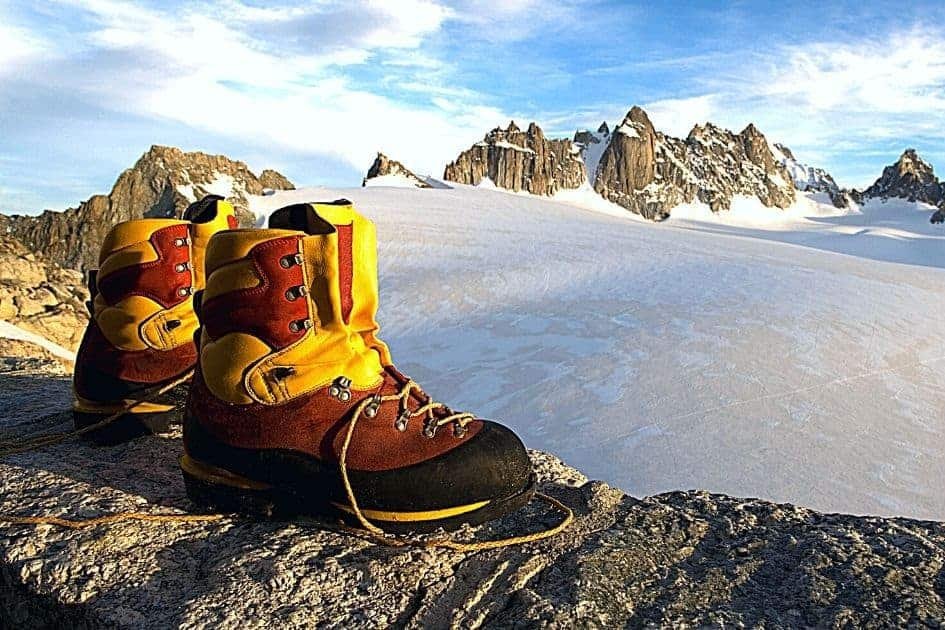Mountaineering is one of the most adventurous and rewarding activities you can do, but it also comes with a high level of risk.
Every year, hundreds of climbers die in the mountains due to various factors, such as avalanches, falls, altitude sickness, hypothermia, and crevasse accidents.
In this article, we will explore the top 5 causes of death in mountaineering and how you can avoid them with proper preparation, training, and equipment, especially boots for mountain climbing.
1. Avalanches
Avalanches are the most common cause of death in mountaineering, accounting for about 25% of all fatalities.
An avalanche is a mass of snow that slides down a slope, triggered by factors such as weather, terrain, snowpack, and human activity.
Avalanches can be very fast and powerful, burying or sweeping away anything in their path.
To prevent avalanches, you need to be aware of the avalanche conditions and forecast before and during your climb.
You should avoid slopes steeper than 30 degrees, especially if they are loaded with fresh snow or wind slab.
You should also carry an avalanche beacon, probe, and shovel, and know how to use them in case of an emergency.
Additionally, you should wear boots for mountain climbing that have a rigid sole and a compatible crampon attachment, so you can have a secure grip on the snow and ice.
2. Falls
Falls are another major cause of death in mountaineering, accounting for about 20% of all fatalities.
Falls can occur due to various reasons, such as slipping, tripping, losing balance, rockfall, icefall, equipment failure, or human error.
Falls can result in serious injuries or death from impact, trauma, or exposure.
To prevent falls, you need to have good climbing skills and techniques, such as proper footwork, balance, and rope management.
You should also wear a helmet, harness, and belay device, and use appropriate protection devices such as anchors, carabiners, and slings.
Moreover, you should wear boots for mountain climbing that have a snug fit and a durable upper, so you can have comfortable and stable support for your feet and ankles.
3. Altitude Sickness
Altitude sickness is a condition that affects some people who ascend too quickly to high altitudes (above 2,500 meters), where the air pressure is lower and the oxygen level is reduced.
Altitude sickness can cause symptoms such as headache, nausea, fatigue, dizziness, shortness of breath, and loss of appetite.
In severe cases, altitude sickness can lead to life-threatening complications such as high-altitude pulmonary edema (HAPE) or high-altitude cerebral edema (HACE), which are fluid accumulation in the lungs or brain respectively.

To prevent altitude sickness, you need to acclimatize gradually to the altitude by ascending slowly (no more than 500 meters per day), taking rest days every 1,000 meters or so, drinking plenty of water, eating high-carbohydrate foods, and avoiding alcohol and tobacco.
You should also take preventive medication such as acetazolamide (Diamox) or dexamethasone (Decadron) if prescribed by your doctor.
Furthermore, you should wear boots for mountain climbing that have a breathable lining and good insulation, so you can keep your feet warm and dry at high altitudes.
4. Hypothermia
Hypothermia is a condition that occurs when your body temperature drops below 35 degrees Celsius (95 degrees Fahrenheit), due to exposure to cold weather or wet clothing.
Hypothermia can cause symptoms such as shivering, confusion, slurred speech, weakness, and loss of consciousness.
In extreme cases, hypothermia can lead to cardiac arrest or death.
To prevent hypothermia, you need to dress appropriately for the weather by wearing layers of clothing that are windproof, waterproof, and insulating.
You should also avoid sweating, staying still, or getting wet.
You should also carry a survival kit that includes a fire starter, a whistle, a flashlight, and an emergency blanket.
Additionally, you should wear boots for mountain climbing that have a waterproof membrane and a thick sole, so you can protect your feet from moisture and cold.
5. Crevasse Accidents
Crevasse accidents are another common cause of death in mountaineering, especially on glaciers or snowfields.
A crevasse is a deep crack in the ice that can be hidden by snow bridges or cornices. Crevasse accidents can occur when a climber falls into a crevasse, gets trapped under the snow, or gets injured by the ice.
To prevent crevasse accidents, you need to be familiar with the terrain and the route by studying maps, photos, and guidebooks.
You should also avoid crossing snow bridges or cornices that look weak or unstable. You should also travel in a rope team with at least two other climbers, and use a glacier travel system that includes a harness, a rope, a pulley, and a prusik.
Furthermore, you should wear boots for mountain climbing that have a stiff shank and a toe welt, so you can attach crampons and ice axes for better traction and self-rescue.

